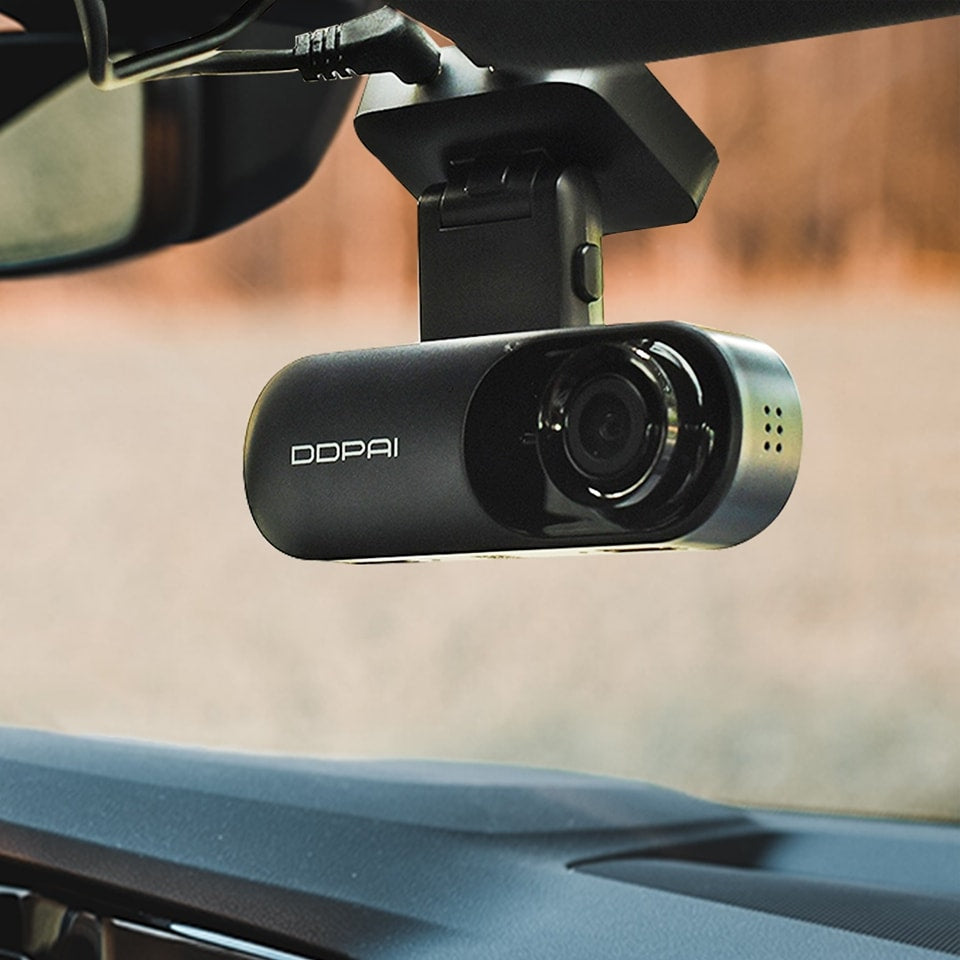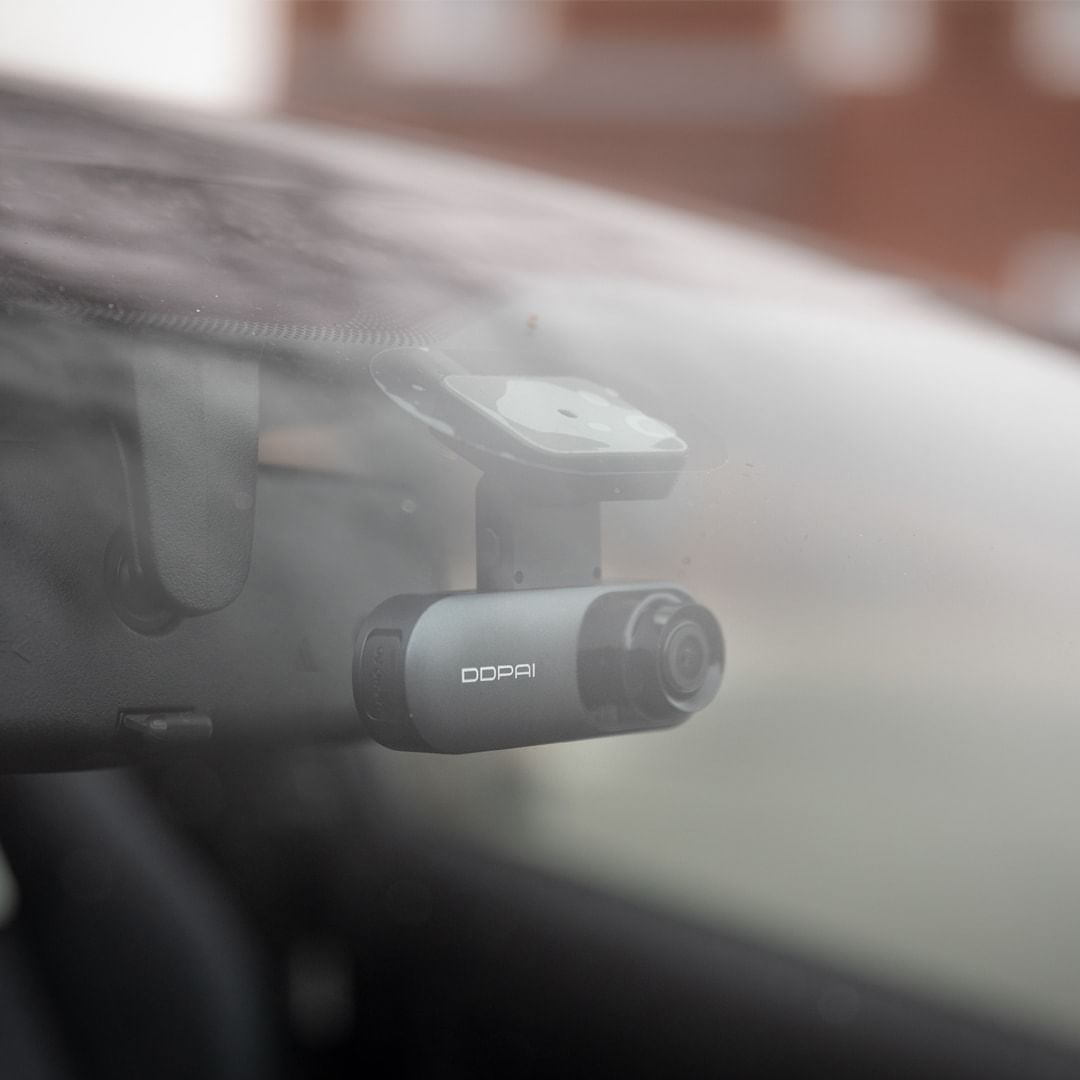Imagine driving with the peace of mind that every mile is being recorded, every incident documented. That's the power of a dash cam in today's smart tech era. But how does this little gadget on your dashboard work? Let's dive into the world of dash cams and discover how they can make your driving safer and more efficient.
What is a Dash Cam?
A dash cam is a compact camera that you mount on your car's windscreen or dashboard. It continuously records the view through the windscreen, capturing everything that happens while you're driving. Dash cams come in various types, each designed to cater to the specific needs of drivers.
Front dash cams, the most common type, record the view of the road ahead. Dual-lens or dual-camera dash cams record both the view in front and behind the car, providing more comprehensive coverage. Some dash cams even come with cabin-view cams that record the interior of the vehicle, which can be particularly useful for ride-share drivers.
How Does a Dash Cam Work?
At its core, a dash cam works by recording video onto a storage device - typically a microSD card. When the dash cam is powered on, usually by starting the car, it begins recording video continuously. If the storage gets full, the dash cam automatically overwrites the oldest footage, ensuring it's always ready to record recent events.
Simply put, a dash cam is like a mini film studio. It records all the actions onto a storage device. Here's a step-by-step breakdown of how a dash cam works:
- Power Source: When you start your car, the dash cam also powers on, typically drawing power from the car's cigarette lighter or USB port. Some dash cams can also be hardwired into the car's fuse box for a cleaner installation and continuous power supply.
- Recording: Once powered on, the dash cam starts recording video through its lens. Most dash cams record in high-definition (HD), with some models offering ultra-HD or 4K resolution for clearer, more detailed footage.
- Storage: The recorded video is stored on a microSD card. The storage capacity can vary, but most dashcams support at least 32GB, and some models can support up to 512GB or more.
- Loop Recording: Dash cams typically use loop recording, which means they continuously record video in segments of a set length (usually 1, 3, or 5 minutes). When the microSD card is full, the dash cam automatically overwrites the oldest segment.
- G-Sensor: The G-sensor (or gravity sensor) detects sudden changes in direction or impact, like in an accident. When the G-sensor is triggered, the dash cam automatically "locks" the current segment, preventing it from being overwritten.
- Parking Mode: Dash cam parking mode allows the camera to continue recording when a vehicle is turned off, capturing incidents that occur while parked. Parking mode is activated either by impact detection via the G-sensor or motion sensors, then typically records for an extended time through an internal battery.
- Playback: You can view the recorded footage by removing the microSD card and inserting it into a computer. Some dash cams also have a built-in screen for playback, or they can connect to a smartphone app via Wi-Fi or Bluetooth.
By understanding these steps, you can better appreciate how a dash cam works and how it can provide valuable evidence in case of an incident.
Why is Understanding How a Dash Cam Works Important?
Knowing how a dash cam works can help you utilize its features effectively. For instance, understanding the loop recording feature ensures you won't worry about running out of storage space. Furthermore, if you're aware of how the G-sensor works, you'll know that your dash cam can automatically save crucial footage during an accident, preventing it from being overwritten.
This knowledge can also help you troubleshoot any issues that may arise with your dash cam. For example, if your dash cam isn't recording properly, you might need to check if the microSD card is full or if the device is receiving proper power.
Features of a Dash Cam
Today's dash cams are like Swiss Army knives, packed with features that do more than just record your drive. Here's a quick rundown:
- G-Sensor: This feature detects sudden changes in direction - like in an accident - and automatically saves the current footage, preventing it from being overwritten.
- Parking Mode: Some dash cams can record even when the car is off, providing surveillance for your parked vehicle. This can be particularly useful in detecting vandalism or hit-and-run incidents when you're away from your car.
- GPS: A built-in GPS can record your vehicle's speed and route, which can be crucial in some incidents. It can also be helpful in tracking your vehicle in case of theft.
- Wi-Fi/Bluetooth: These features allow you to connect the dash cam to a smartphone app, where you can view and download videos. This can make it easier to share footage with your insurance company or law enforcement if needed.
Latest Advances in Dash Cam Technology
Dash cam technology has seen significant advancements in recent years. Some of the latest models now come with features like voice control, allowing you to operate the dash cam hands-free. Advanced driver-assistance systems (ADAS) are also becoming more common, providing features like lane departure warnings and forward collision warnings to help prevent accidents.
Cloud storage is another exciting development in dash cam technology. With cloud storage, your dash cam can automatically upload footage to a secure online server, ensuring it's safe even if the dash cam itself is damaged or stolen. Some dash cams also offer live streaming capabilities, allowing you to check on your car in real time from your smartphone.
Looking ahead, we can expect dash cams to incorporate more AI-based features and better integration with other smart devices. For instance, future dash cams could potentially communicate with other vehicles or traffic systems to provide real-time traffic updates or accident alerts.
Legal Considerations When Using a Dash Cam
Before installing a dash cam, it's important to understand the legal implications. Laws regarding dash cam usage vary by country and even within states or provinces. In some places, there may be restrictions on recording people without their consent or mounting objects on the windscreen. Some jurisdictions may also have laws regarding the use and disclosure of dash cam footage.
Always research and comply with local laws and regulations related to dash cams. If you're unsure about the legality of using a dash cam in your area, consider consulting with a legal professional. Remember, while dash cams can provide valuable evidence in case of an incident, they should not be used as an excuse to disregard safe driving practices or privacy laws.
Understanding more about: Dash Cam Laws By State
Choosing the Right Dash Cam
Dash cams with the best features can make a big difference in capturing important incidents and providing driver assistance. Look for dash cams that offer:
- High resolution: Aim for at least 1080p (full HD) video to get the best image quality for clearly identifying details like license plates and faces. Many models now offer 1440p or 4K resolution for ultra-sharp footage.
- Wide recording angle: Aim for a lens with at least 140 to 160 degrees of coverage to capture as much of the road and surroundings as possible. A wider angle ensures you'll catch all important details in the frame.
- Reliable recording: Look for a dash cam with features like continuous recording mode (loop recording), G-sensor triggered recording and parking mode to ensure it captures any incident reliably when you need it. Prioritize dash cams with proven recording performance.
- Recording duration: Consider how long the dash cam can record continuously before overwriting older footage. Aim for at least 2-4 hours to ensure it can capture an entire trip or longer incident.
Dash cam technology is rapidly improving, with new features that can enhance safety and convenience. But high resolution, reliable video recording remains the core function of any dash cam. Do your research, read reviews and compare multiple options to find a dash cam that offers the specific features most valuable to you.
How to Install and Use a Dash Cam
Installing a dash cam typically involves mounting it on the windscreen, connecting it to a power source, and inserting a microSD card. Once installed, the dash cam will start recording automatically when you start the car. For best results, ensure the lens has a clear view of the road and is not obstructed by any objects.
Using a dash cam effectively also involves regularly checking and maintaining the device. Make sure the lens is clean, the software is up-to-date, and the microSD card is functioning properly. Regularly review and save any important footage, and remember to respect privacy laws when sharing or publishing dash cam videos.
Conclusion
Understanding how a dash cam works can help you make the most of its features and enhance your driving safety. With the latest advancements in technology, dash cams are becoming more than just silent witnesses on the road - they're evolving into smart devices that offer a range of benefits for drivers. Always remember to comply with local laws when using a dash cam and choose a model that best fits your specific needs. As we navigate through the roads of life, a dash cam serves as a reliable companion, keeping a watchful eye on our journeys and ensuring our experiences are captured, one drive at a time.
FAQ
How long can a dash cam record?
This depends on the storage capacity of the microSD card and the video quality. A 32GB card can typically store 3-4 hours of high-quality footage.
Can a dash cam work when the car is off?
Some dash cams have a parking mode feature that allows them to record when the car is off.
How do I view footage from my dash cam?
You can usually view footage by removing the microSD card and inserting it into a computer. Some dash cams also allow you to view footage via a smartphone app.
What are the latest features to look for in a dash cam?
Some of the latest features to look for include voice control, ADAS, cloud storage, and live streaming capabilities.



Leave a comment
This site is protected by reCAPTCHA and the Google Privacy Policy and Terms of Service apply.